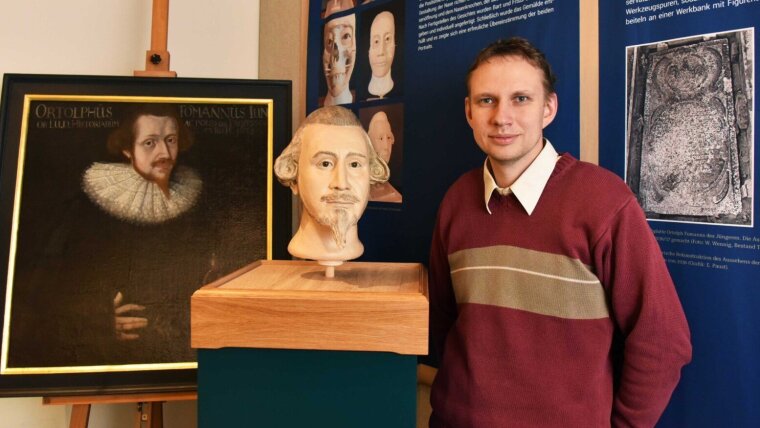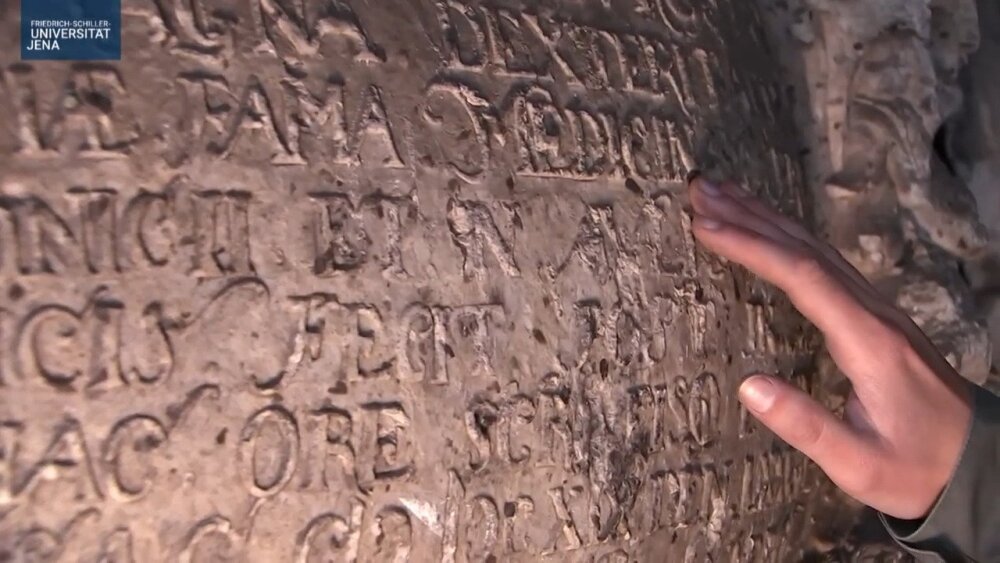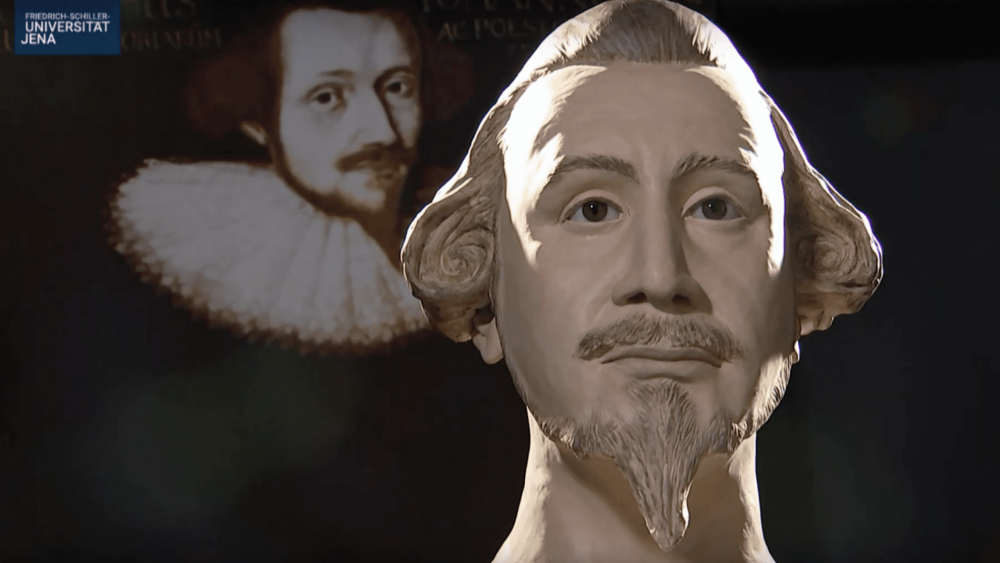
- Event
- Knowledge Transfer and Innovation
Published: | By: Stephan Laudien
How did the professors and students of the University of Jena live in the early modern period? How did they dress, what did they eat, what did they drink? And eventually: what did they die of? Since 2018, researchers have been finding answers to these and many other questions in the project "Early Jena University History based on the collegiate quarter and with special consideration of the rectors' graves". Visitors can see the first results and gain insights into the research in the exhibition "The Collegium Jenense. A University Building Ensemble of European Importance - Archaeology, History & Future", which will be shown from 18 November to 23 December 2022 in the exhibition room (E025) of the main building of Friedrich Schiller University Jena (Fürstengraben 1).
The showpiece is the reconstructed face of a professor
"We are showing finds from the collegiate church, including objects that once belonged to students," says Dr Enrico Paust. The curator of the university's Prehistory and Early History Collection is the coordinator of the research project. On display, for example, is a scale model of the former collegiate church. For centuries, it was the central ceremonial and burial place of the University. The showpiece of the exhibition is certainly the facial reconstruction of Professor Ortolph Fomann the Younger. Based on the skull found during excavations in the area of the collegiate church, forensic pathologist Dr Constanze Niess reconstructed Fomann's face in Frankfurt/Main. The result shows the face of a person who died in Jena on 6 June 1640 in original size. Also on display are figurative fragments of epitaphs, monumental carvings that bear witness to the life and work of the deceased. As Dr Paust explains, only parts of the epitaphs have survived in most cases, as the collegiate church was destroyed in a bombing raid in the spring of 1945. At the same time, the war damage prompted the first excavations in the area and the recovery of objects from the early days of the university. Much of it is still waiting to be processed and interpreted. Also on display in the exhibition are two headdresses recovered from burial sites. In addition, there are panels explaining the research work and classifying the Collegium Jenense area historically. After all, the founding site of the University of Jena can claim to have been in continuous university use since 1548. An almost unique continuity in all of Europe.
Public guided tours on the Long Night of the Sciences
The exhibition "The Collegium Jenense" will be ceremonially opened on Thursday, 17 November. Starting at 6.30 pm, President Prof. Dr Walter Rosenthal and Andreas Lesser will welcome guests in Lecture Hall 24 in the main university building (Fürstengraben 1). Andreas Lesser is the founder of the Friedrich Christian Lesser Foundation and a descendant of the professors buried in the Collegium. Afterwards, Dr Enrico Paust will introduce the topic of the exhibition. Admission is free, guests are welcome.
The exhibition is open until 23 December, Monday to Friday from 10 am to 6 pm, admission is free.
The supporting programme includes public guided tours on the Long Night of the Sciences on 25 November at 6.30, 8.30 and 10.30 pm. The museum will be open until midnight on this day. In addition, Joachim Bauer, Stefan Gerber and Enrico Paust will speak on 6 December at 6 p.m. in lecture hall 24 on the topic of "The Collegium Jenense – A University Building Ensemble of European Significance".
07743 Jena Google Maps site planExternal link

